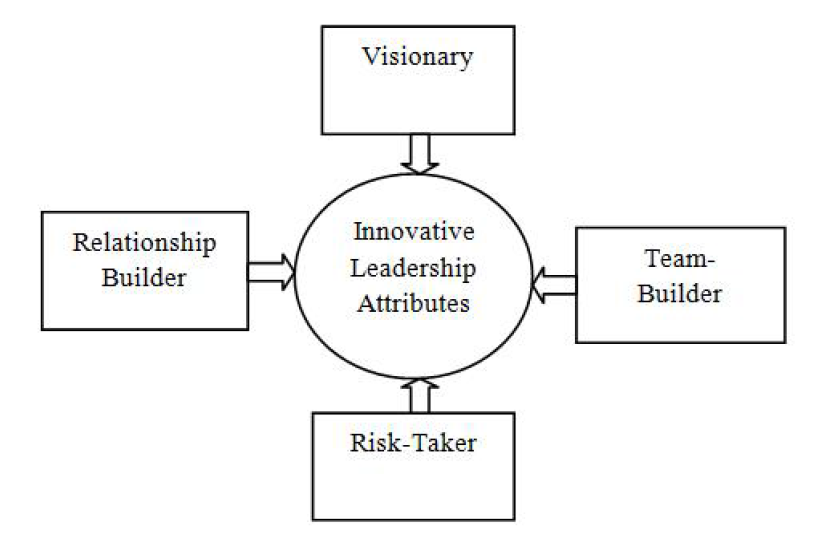Innovative leadership attributes of school administrators in the Philippines: Implications for educational management
Main Article Content
Abstract
Innovative leadership is crucial in the 21st century. The success of any organization depends on the kind of leaders in managing at the helm of the institution. This study determined the attributes of school administrators in the four dimensions namely: visionary, team builder, relationship builder, and risk taker. The descriptive method was employed using quantitative data. This study was conducted at Bukidnon State University, Northern Mindanao, Philippines. A total of 102 respondents participated in this study. They represented the five colleges of the university such as the College of Arts and Sciences, College of Nursing, College of Education, College of Social Development, College of Business, and College of Social Development and Technology. The data were gathered using a researcher-structured questionnaire. The instrument was validated and the coeffient reliability of Cronbach Alpha is 0.951. Mean and Standard deviation were utilized to analyze the data. The findings revealed that the administrators were rated agree by their teachers considering the four indicators of innovative leadership attributes. This implies that the administrators are much highly innovative. The result of the study serves as a guide for educational planners to incorporate the results of the study in the regular strategic planning.
Article Details
References
M. Ailin, P. Lindgren, Conceptualizing strategic innovation and excellence, Journal of Knowledge Globalization (2008) 87–107.
R. Basu, S. G. Green, Leader-member exchange and transformational leadership: An empirical examination of innovative behaviors in leader-member dyads, Journal of Applied Social Psychology 27(6) (1997) 477–499.
A. Carmeli, R. Gelbard, D. Gefen, The importance of innovation leadership in cultivating strategic fit and enhancing firm performance, The Leadership Quarterly 21 (2010) 339–349.
A. N. Chike-Okoli, Fundamentals of management, Minna, Elicola Enterprises, 2002.
Chopra, Ahmad. Study on the visionary of leadership,https://www.ukessays.com/essays/management/study-on-thevisionary- of- leadership-management-essay.php?vref=1, 2004
(accessed 14 April 2018).
G. Couros, The principal of change, https://georgecouros.ca/blog/archives/481, 2016 (accessed 16 March 2018)
F. J. Flynn, B. M. Staw, Lend me your wallets: The effects ofcharismatic leadership on external support for an organization, Strategic Management Journal 25 (2004) 309–330.
D. Gliddon, https:etda.libraries.psu, 2006.
V. Govindarajan, The three-box solution: A strategy for leading innovation, New York: Harvard Business Review Press, 2016.
H. Soken, B. Kim Barnes, What kills innovation? Your role as a leader in supporting an innovative culture, Industrial and Commercial Training 46(1) (2014) 7–15.
S. T. Hunter, L. Cushenberry, Leading for innovation: Direct and indirect influences, Advances in developing Human resources, 13 (2011) 248–265.
E. Koh, W. Owen, Descriptive research and qualitative research, https://link.springer.com/chapter/10.1007/ 978-1-4615-1401-5 12, 2000 (accessed 10 February 2018).
J. P. Kotter, Force for Change: How leadership differs from management, New York: Harvard Business Review Press,2018.
J. Kouzes, B. Posner, The leadership practices inventory (LPI), San Francisco, CA: John Wiley & Sons, 2003.
T. Lazarova, Innovation leadership as a key skill in business, international scientific publications, Economy and Business 8 (2014).
Y. Ling, Z. Simsek, M. Lubatkin, J. Veiga, Transformational leadership’s role in promoting corporate entrepreneurship: Examining the CEO-TMT interface, Academy of Management Journal 21 (3) (2008) 557–576.
J. A. Lepine, R. F. Piccolo, C. L. Jackson, J. E. Mathieu, J. R. Saul, A meta-analysis of teamwork processes: Tests of a multidimensionalmodel and relationships with team effectivenesscriteria, Personnel Psychology 61(2) (2008) 273–307.
J. G. March, Learning to be risk-averse, Psychological Review 103(2) (1987) 309–319.
J. March, Z. Shapira, Managerial perspective on risk and risk taking, Management Science 33(11) (1987) 1404–1418.
D. McEwan, G. Ruissen, M. Eys, B. Zumbo, M. Beauchamp, The effectiveness of teamwork training on teamwork behaviorsand team performance: A systematic review and meta-analysis of controlled interventions (2017).
P. Miller, K. Klokgieters, A. Brankovic, F. Duppen, Managing innovation: An insider perspective, Capgemini Innovation Leadership Study, 2012.
D. C. Orazi, A. Turrini G. Valloti, Public sector leadership: New perspectives for research and practice, International Review of Administrative Sciences 79(3) (2013) 486–504.
G. Perry, The importance of human relations in the workplace, https://www.Business.com/articles/human-relations-manage ment-theory-basics, 2011 (accessed 24 March 2018)
M. Petryni,The importance of human relations in the workplace, Retrieved February 14, 2019, 2011.
T. Sammut-Bonnici, S. Paroutis, Developing a dominant logic of strategic innovation, Management Research Review 36(10) (2013) 924–938.
C. A. Sanchez, Methods and techniques of research, Quezon City: Rex Printing Co. Inc., 1998.
B. Shaefer, On becoming a leader: Building relationships and creating communities, https://ev.educause.edu/articles/ 2015/10/on-becoming-a-leader-building-relationships-and
-creating-communities, 2015.
H. Simon, Decision theory of management, http:ebusinessmgt.blogspot.com2010/03decisions-theory-of-management, 2010 (accessed 8 February 2018).
P. Spahr, What is innovative leadership? How imaginationrevolutionizes, St.Thomas University, https://online.stu.edu /innovative-leadership/, 2017 (accessed 25 August 2017)
J. E. Stevenson, Breaking away- A new model for innovation leadership, Employment Relations Today 39 (2012) 17–25.
K. Stott, A. Walker, Extending teamwork in schools: Support and organisational consistency, Team Performance Management5 (1999) 50–59;
Tull, Risk Taking & Leadership: Irrational, Reckless, Irresponsible, Swim with Sharks; Or, Rules-Breaker, -Shaker, -Taker, -Maker, https://www.connectthedotsconsulting.com/documents/TakingRisksinLeadership/Tak ingRisksinLeadership.pdf, 2012 (accessed 20 February 2018).
A. Walgrove, 7 Studies That Prove People Work Better in Teams, https://blog.crossover.com/7-studies-that-prove-peoplework-better-in-teams-Productivity, 2016 (accessed 25 April 2018).
W. Wipulanusat, K. Panuwatwanich, R. Stewart, Exploring leadership styles for innovation: An exploratory factor analysis. Economics and Management 9(1) (2017) 7–17.
F. Yuan, R. W. Woodman, Innovative behavior in the workplace: The role of performance and image outcome expectations, Academy of Management Journal 53(2) (2010) 323–342.
J. Zenger, J. Folkman, 10 Traits of innovative leaders, https://hbr.org/2014/12/research-10-traits-of-innovativeleaders, 2014 (accessed 24 March 2018)
J. Zinn, The meaning of risk-taking-key concepts and dimensions, Journal of Risk Research 22(1) (2019) 1–15.


